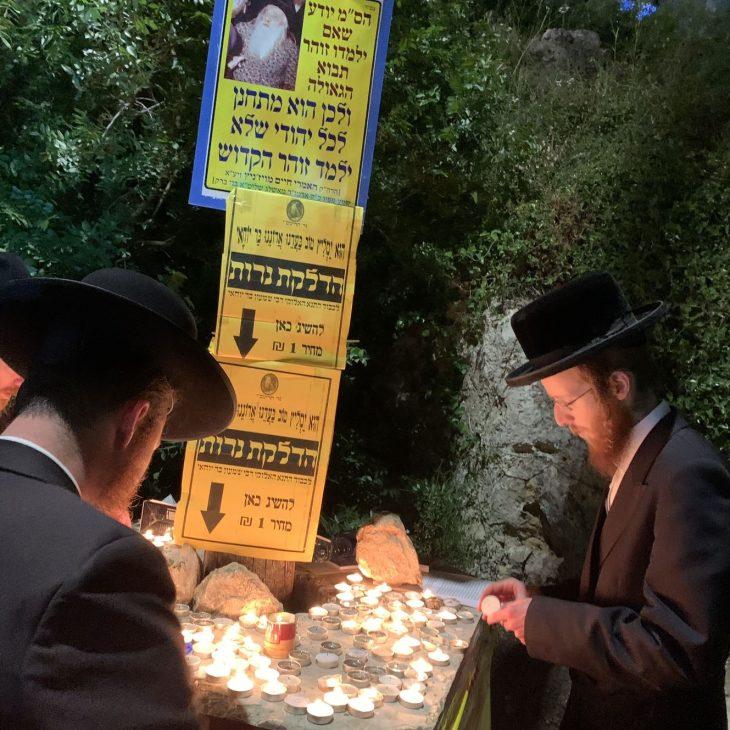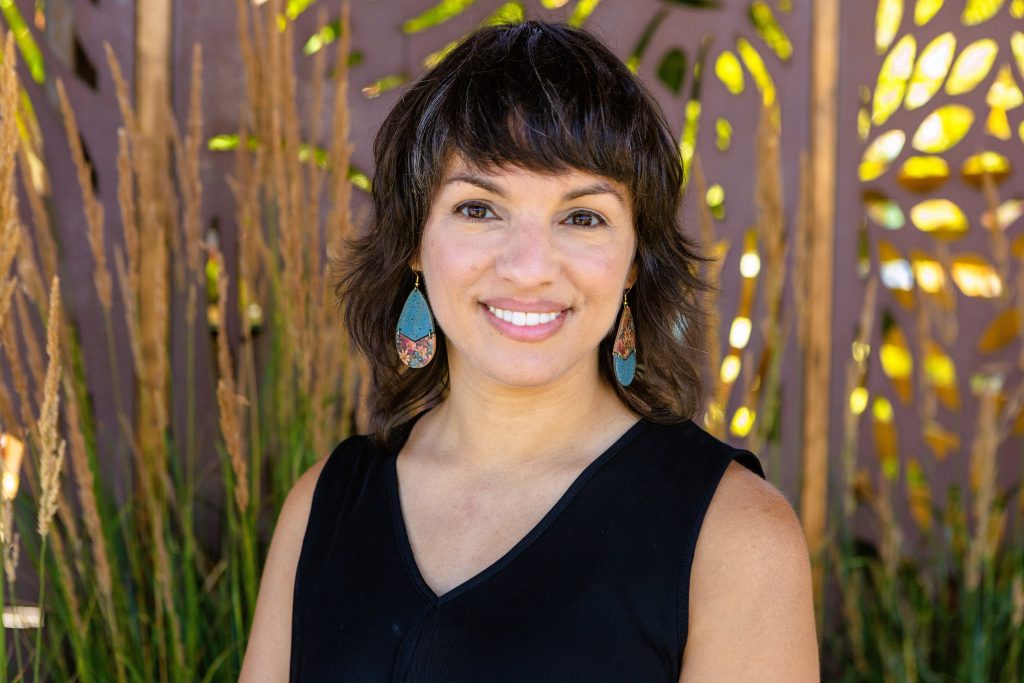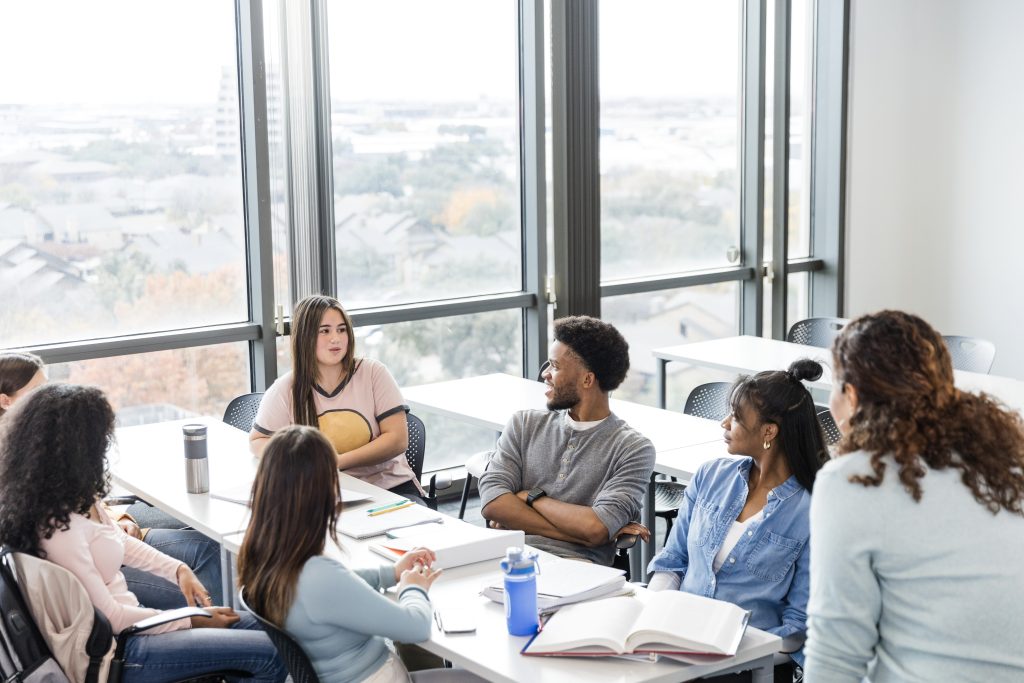Mourning As An Act Of Interfaith Solidarity: Bearing Witness To The Tragedy On Mount Meron
May 28, 2021

A few weeks ago I visited Meron, Israel, for the Lag B’Omer festival. Lag B’Omer is the Jewish festival celebrated on the 33rd day of Counting of the Omer, 49 days between Passover and Shavuot. Lag B’Omer is a holiday that is considered a celebration, and according to tradition, coincides with the anniversary of the death of Mishnaic sage Rabbi Shimon Bar Yochai, who is known for authoring a key Kabbalah text, the Zohar. The festival of Lag B’Omer is most profoundly celebrated on Mount Meron, where hundreds of thousands of pilgrims–mostly Haredim (“ultraorthodox”) but also people of all levels of observance–come to celebrate the life of the Rebbe and Jewish mysticism.
This year, the festival was a time that many thousands of people felt was ripe for a celebration. Now, with Israel appearing to have reached close to herd immunity, public celebrations of spring holidays such as Passover, Ramadan (in 2021), and Easter, reflected a spirit of renewal after a year of death and tragedy. This was, of course, before the recent explosion of violent conflict between the Israeli Defense Forces and Hamas (the Islamic Resistance Movement of Gaza) and the Palestinian Islamic Jihad. So it was with this spirit–in a moment of reprieve between tragedies–that in early May 2021, thousands of pilgrims traveled to Mount Meron–eager to connect with their spirituality and community. Being fully vaccinated, I decided to attend the event with two friends. As many readers may know, this night of celebration quickly turned into the largest civilian disaster in modern Israel, a stampede that resulted in 45 deaths and dozens of injuries.
It has only been days since I visited Meron, and while I am thankfully physically unscathed, I was very close to the site of the disaster, there perhaps only an hour before. The disaster was an accident, with the blame resting on logistical failure and poor crowd control organization. This phenomenon happens at religious sites from time to time, especially during high holidays: for example during the 2015 Mina stampede in Mecca, where 717 pilgrims lost their lives, or the 2005 Hindu Mandhar Devi Temple stampede which killed 250 in Maharashtra, India.
Haredim in Israel constitute nearly fifteen percent of the Israeli population, and feel alienated from secular Israeli society and often do not benefit from the same governmental support and services to other citizens; their communities often have high rates of poverty, low levels of education, and fall victim to social prejudice. At the same time, the Haredi community has been criticized by Israeli populations for their failure to comply with civil laws and regulations–such as those for controlling the COVID pandemic. And so, in this context, the Meron disaster ensued, taking the lives of imperfect people in an imperfect land–which is what happens during each and every tragedy. Those who died were precious. They were known and loved by their communities and their Creator. All this occurred during a festival dedicated to the rabbi and sage known as RaShBi, who is known for helping define the cornerstone Chassidic teaching that God is to be loved and not feared. The holiday was developed as a time of holy joy and resistance–a profound concept developed against the background of Eastern European shtetl life in the nineteenth century where Jews were violently persecuted. This festival embodied the Chassidic reorientation toward faith in an all-loving and all-present God, who delighted in human joy, where worship and celebration were often synonymous.
At Meron, I had the privilege of meeting Haredi people and learning more about their unique traditions of rabbinic learning. With my friends, I explored the fairgrounds of Mount Meron. Free food and wine were handed out with a spirit of generosity and celebration. Yiddish and Hebrew music blared from loudspeakers. Vendors sold beautifully bound volumes of rabbinic literature in every size, font, and color. Large groups of men clad in black and white danced joyfully in groups.
Of course, I must acknowledge that I was only welcomed into this space because I am a man. Women, even those from the Haredi community, had to participate from the fringes and did not get to join in the dancing or the prayer or enter the epicenter: the grave and synagogue at the site of RaShBi’s repose. However, alongside this unfairness–and not despite it–I recognized friendliness, hospitality, and welcoming. It was a lavish time of delight, and I could not help but admire the fervent faith that was present. This joy for Torah and God was demonstrated in countless groups of tipsy Yeshiva boys dancing in circles, in music, laughter, and davening men in tallitot amidst it all.
It was a night of celebration–even against a background of sorrow, such as was seen in the COVID-19 pandemic which took the lives of 7,000 Israelis. I took in the sights and sounds and began to feel a sense of delight in the hospitality of this community I was just getting to know. However, before I knew it, things took a horrible turn. My friends and I had gone into a store selling books, Judaica, and jewelry. Finally, after paying for the souvenirs we wanted, we emerged back onto the streets of Meron. As we entered back into the crowded streets, we noticed that something was amiss. The crowds-though in full, chaotic force, seemed somehow more subdued. A youth with long blond peyot and a gushing bloody nose passed us, despondent. A couple of emergency medical staff rushed by in neon-colored clothing. A crumpled man was carried on a stretcher down the dirt road. Sirens began to fill the air. We were already on our way down the mountain to the tent where we would sleep for the night. So, we continued heading there, confused and perplexed. By this point, it was very late, and the festival was supposed to have still been going strong, but the celebration came to a standstill as word of what happened spread.
Back at our tent, information began to come out. We sat in silence, digesting it. How many died? How did they die? I stood by the bonfire with a couple of others as they prayed for the dead and victims of the disaster in imperfect Hebrew. The next day we made it home. I was shocked and stunned, thoughts and emotions swimming around my head. I had only just begun to understand this group of people and gradually come to respect them more as a valuable part of a pluralist society. In the coming weeks, I would frequently think about the event, stay up sleepless at night, and struggle to comprehend how something so avoidable and unintended happened.
These experiences sit within my heart, and I compare them to what I have learned in my academic course of study in conflict and peace. Currently, I am preparing to begin a Master’s Thesis at Tel Aviv University in the Conflict Resolution and Mediation program. I will research rituals of collective mourning and memorialization, striving to understand whether or not these communal endeavors affect unity, resilience, and the collective humility that is needed to advocate for justice in Israel-Palestine–in the face of hatred, violence, occupation, terrorism, antisemitism, drastic economic inequality, islamophobia, and legal injustice.
Living in this land, I find Divinity present in mourning, solidarity, and accompaniment when there seems to be little hope in political or systematic resolution. I find Divinity in embracing imperfections of human beings while at the same time refusing to accept the unjust status quos and honoring the loss of the dead, even the dead we do not understand and the dead who we believe hate us. When precious else is certain, I seek Divinity in listening, being present, and persisting in not accepting easy answers. This is a lesson I have learned in my time in the Interfaith Youth Core, in Israel-Palestine, and one I seek to further pursue in a vocation as a chaplain. As my favorite prayer, a prayer that honors the religious order of my patron saint Francis of Assisi says,
Share
Related Articles
“May God bless you with discomfort at easy answers, half-truths and superficial relationships… anger at injustice, oppression, and exploitation of people… tears to shed for those who suffer pain, rejection, starvation and war… and, may God bless you with foolishness,
“May God bless you with discomfort at easy answers, half-truths and superficial relationships… anger at injustice, oppression, and exploitation of people… tears to shed for those who suffer pain, rejection, starvation and war… and, may God bless you with foolishness,
Foolishness to believe that you can make a difference in this world,
Foolishness, so that you will do what others claim cannot be done.
Amen.”
This is our vocation as people dedicated to building a more just world through a dedication to interfaith dialogue, religious pluralism, and cooperative projects for justice–to confess what we can and cannot do, what we can and cannot know. We do this work even though it rarely offers straightforward answers. We do this even when differences of backgrounds, experiences, and opinions seem intractable and irreconcilable. Acts of accompaniment empower us to meet the most basic interpersonal needs of our neighbors and ourselves: the needs to be understood and known in our sufferings and our joys. In this, we express the desire to build a human family that persistently seeks to grow in knowledge, empathy, and understanding while also acknowledging injustices and systems of being that must die to give new life to a better world for all. This is what I contemplate as I live in Israel-Palestine. This is what I ponder as I hold the suffering and horror I witnessed firsthand at Meron–and the tragedy of the militarized occupation of Palestine and daily terror attacks on innocent Israelis in retaliation. I hold all who have died in my heart.
To mourn those even whom we disagree with is an act of holy resistance, a persistence to have faith that Divinity is in each of us. And because of this, we must hope that through mutual accountability, humble accompaniment, and honest dialogue, we can transform our civilizations to be more just and moral. These are not political platitudes like “there are two sides of every conflict.” That is simply unfair to the truth. Rather it’s a hope in building a world where every person is fought for equally to honor their integrity and intrinsic sacredness. Mourning is an example of resistance to the status quo that tells us to hate our enemies. Mourning is a prayer against indifference and a prayer to use our short lives towards the work of peace in honor of those who have died. As I live in this broken land in this broken world, I strive to be the best ally to my dear siblings on this earth, to learn from them–and when there is little else I have the power to do–to mourn alongside them.
It is a Catholic practice to name and pray for the dead, but also a ritual found in many other traditions. So, if we are unsure about all things, we can at least name the dead and bereaved. Let us remember the 45 lives lost of Haredi men and children in Meron. Let us remember the 243 people killed in the Gaza strip by airstrikes last week. Let us remember the 13 people killed in Israel by missile attacks this week. Let us remember 20 people killed in clashes in the West Bank. May each of their blessed memories be honored as we continue to work to make this land and this world a place of understanding, justice, and peace.



